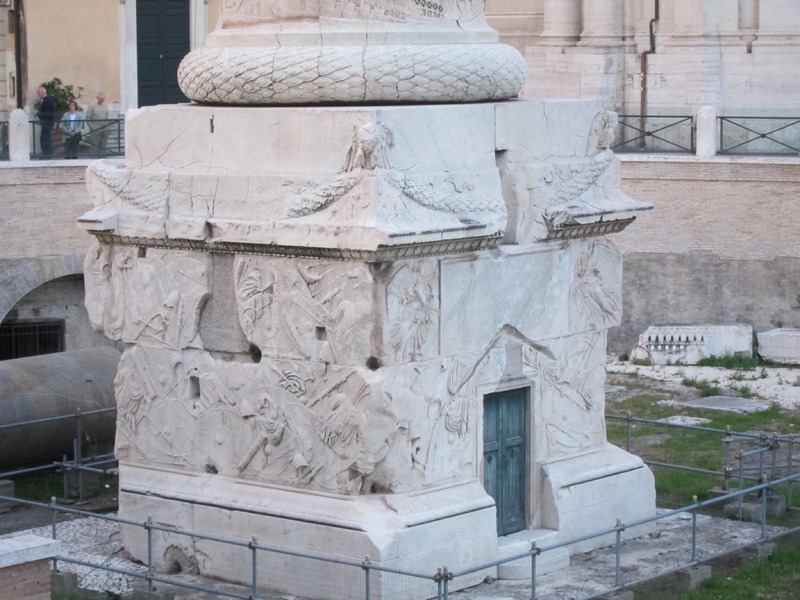Honorific Inscription
SENATVS POPVLVSQVE ROMANVS
IMP CAESARI DIVI NERVAE F NERVAE
TRAIANO AVG GERM DACICO PONTIF
MAXIMO TRIB POT XVII IMP VI COS VI P P
AD DECLARANDVM QVANTAE ALTITVDINIS
MONS ET LOCVS TAN[TIS OPER]IBVS SIT EGESTVS
The Senate and People of Rome, to the Divine Emperor Caesar Nerva Trajan, son of Nerva, High Priest, [conquerer of] Germany and Dacia, [vested] with the power of the tribune 17 times, emperor 6, consul 6, father of the nation, for demonstrating [that] a mountain and a place of such height were excavated for such works.
This inscription begins by stating that the Column was formally dedicated by the Senate and People of Rome, with whom Trajan had an excellent relationship. It then lists his names, his various titles, who his father was, and many of his achievements. He is even given the distinction of P P, which stands for pater patriae, father of the nation.
Notably, the inscription ends by saying that the Column memorializes a great work of excavation at this site, i.e. the excavation of Trajan’s Forum. The column’s frieze clearly tells the story of Trajan’s conquest in the Dacian Wars, but the inscription makes no mention of the wars, rather discussing only his public works. This interpretation agrees with Andrew Fear’s take on the column’s imagery, which focuses disproportionately on the troops engaged in peaceful activities such as building and marching. Fear says that the frieze deliberately paints the troops as decorous and constructive, rather than bloodthirsty and savage1. The inscription’s focus on Trajan’s infrastructural accomplishments echoes this mindset.
1. Andrew Fear, “An Unwinding Story: The Influence of Trajan’s Column on the Depiction of Warfare,” in War as Spectacle: Ancient and Modern Perspectives on the Display of Armed Conflict, ed. Anastasia Bakogianni and Valerie M. Hope (London: Bloomsbury Academic, 2015), 239-253.
